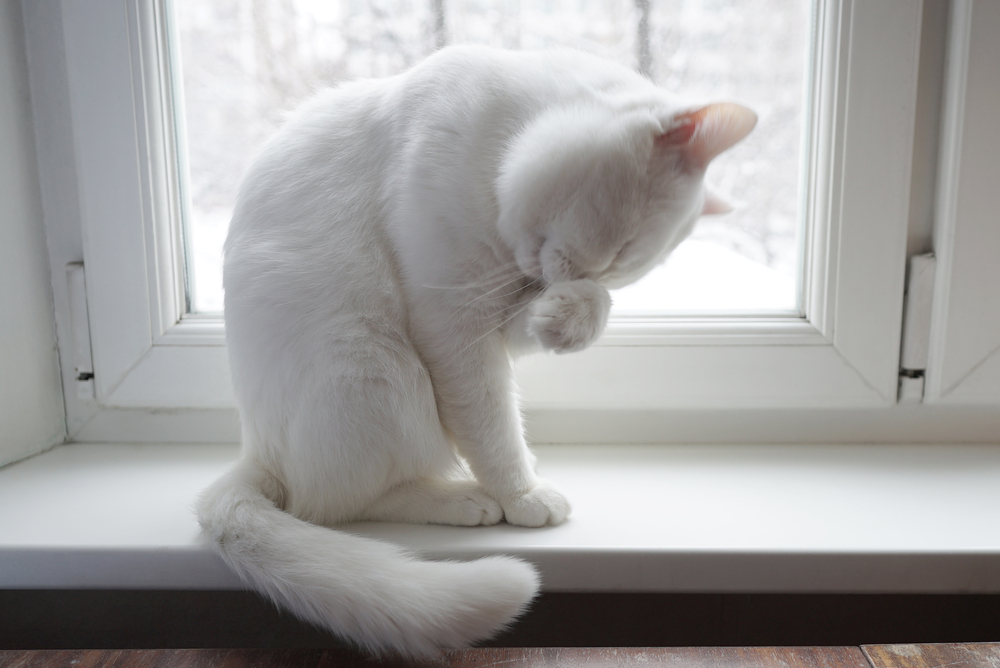Numerous conditions can affect your pet’s eyes, potentially threatening their vision if not properly treated. Our Boca Midtowne Animal Hospital team’s goal is to enhance the bond between you and your furry friend, and we provide information about common pet eye diseases so you know when to seek veterinary advice to help preserve your pet’s eyesight.
Corneal ulcers in pets
A corneal ulcer is a break in your pet’s corneal epithelium. Most corneal ulcers are classified as simple, meaning they affect only the superficial corneal layers, but these lesions can easily become infected, leading to a complicated ulcer that can progress quickly to vision loss or eye rupture. Other information pet owners should know about corneal ulcers includes:
- Causes — Potential corneal ulcer causes include eye injury (e.g., a scratch from another pet), foreign bodies (such as plant material), chronic corneal irritation, and chemical exposure.
- Signs — Pets affected by a corneal ulcer typically exhibit signs such as eye redness, squinting, tearing, and eye rubbing.
- Diagnosis — Our veterinary team will thoroughly evaluate your pet’s eye. We will apply fluorescein stain to their cornea, which adheres to the damaged area, highlighting the corneal ulcer. Corneal ulcers can be extremely painful, and we may need to sedate your pet to properly evaluate them.
- Treatment — Prompt treatment is critical to prevent corneal ulcer complications. Our team may prescribe the following treatments:
- Topical antimicrobials to help prevent corneal infections.
- Topical atropine to dilate the pupil and help alleviate eye pain.
- Oral pain medications, such as non-steroidal anti-inflammatory drugs (NSAIDs), to keep your pet comfortable.
Keratoconjunctivitis sicca in pets
Tears are essential to eye health. They provide lubrication, contain anti-bacterial proteins and salts to flush away irritants and help remove metabolic wastes from the eyes. Keratoconjunctivitis sicca (KCS) is a condition, commonly known as dry eye, that occurs when the tear film is deficient, leading to a chronically inflamed cornea and conjunctiva. Other information pet owners should know about KCS includes:
- Causes — The most common KCS cause is immune-mediated destruction of the tear-producing gland tissue. Why this occurs is unclear, but such breeds as the cocker spaniel, miniature schnauzer, and West Highland white terrier are at increased risk. Other potential KCS causes include viral infection (e.g., canine distemper and feline herpesvirus-1), sulfa-containing antibiotics, congenital tear gland abnormalities, and trauma.
- Signs — KCS signs include red, irritated eyes, squinting, excessive blinking, and a thick, yellowish or white mucoid discharge. If left untreated, the cornea can become discolored and ulcerated.
- Diagnosis — Our team will measure your pet’s tear production using the Schirmer tear test. This involves placing a test strip in your pet’s lower eyelid for 60 seconds and measuring the moistened area on the paper.
- Treatment — KCS treatment is usually needed for life and may include:
- Topical cyclosporine to suppress the immune destruction that is the most common KCS cause and help restore tear production.
- Artificial tear solutions and ointments to help soothe irritated eyes until tear production is restored.
- Topical antimicrobials if corneal ulcers are present to help prevent infection.
- Topical steroids to help initially control eye inflammation and pain.
Cataracts in pets
A cataract is a lens opacity that can cause blindness depending on the size and location. Typically, a cataract must cover about 60% of the total lens area before visual impairment is apparent. Any pet can develop cataracts, but certain breeds are at higher risk. Cat breeds at increased risk include Persians, Siamese, Russian Blue, and Himalayan, while dog breeds at increased risk include cocker spaniel, Labrador retriever, French poodle, and Boston terrier. Other information pet owners should know about cataracts includes:
- Causes — Cataracts are most commonly an inherited trait. Other potential causes include age, eye trauma and inflammation, and diabetes. Approximately 80% of diabetic dogs develop cataracts.
- Signs — Owners may notice a cloudy appearance in their pet’s eyes, but they may not be able to observe any changes if the cataract is small.
- Diagnosis — Our team diagnoses cataracts by performing a thorough ophthalmic examination. We also may recommend blood tests to determine if your pet has diabetes.
- Treatment — Diabetic pets must receive treatment to regulate their blood sugar, and we will evaluate their eyes regularly to monitor cataract progression. In other cases, treatment isn’t always necessary if the cataract isn’t associated with inflammation or glaucoma. Our team may recommend surgical removal if the cataract obstructs your pet’s vision.
Glaucoma in pets

Glaucoma is caused by increased intraocular pressure (IOP) that occurs when fluid cannot drain properly from the eye. If not alleviated, high IOP levels can damage the optic nerve and cause blindness. Other information pet owners should know about glaucoma includes:
- Causes — Glaucoma can be primary, caused by an inherited condition, or secondary to another eye disease, such as uveitis, cataracts, lens luxation, retinal detachment, and tumors.
- Signs — Some pets affected by glaucoma have no signs, but potential signs can include eye discharge, bulging eyes, cloudy appearance to the eye, eye rubbing, and a dilated pupil.
- Diagnosis — Glaucoma diagnosis involves measuring the IOP using an instrument called a tonometer.
- Treatment — Treatment can be medical, involving topical medications to control the IOP or surgical. If treatment is unsuccessful and the eye is permanently blind and painful, we may recommend enucleation, a procedure involving removal of the eye.
The best way to protect your pet’s vision is to schedule regular wellness exams that include a thorough ocular evaluation. Contact our Boca Midtowne Animal Hospital team today to schedule your furry pal’s appointment.







Leave A Comment